Vleughels' Circle of Friends in the Early Eighteenth Century
©Martin Eidelberg
Created May 1, 2011
Click to Print or Download PDF Version
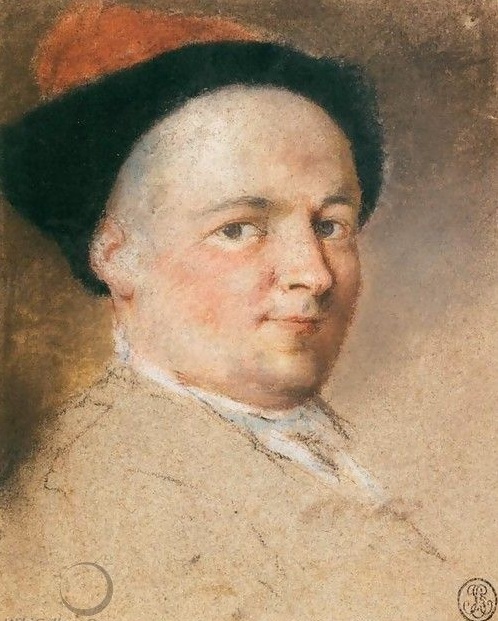 |
1. Nicolas Vleughels, Self-Portrait, pastel, 27.1 x 21.1 cm. Paris, Musée du Louvre, Cabinet des dessins. |
Nicolas Vleughels (1668-1737) is one of those artists whose importance resides more in whom he knew rather than in what he created (fig.1).1 His fame derives not from his achievement as a painter, for at best he was only ordinary. Rather, his reputation stems from his role as head of the Académie de France in Rome from 1724 until his death. His long tenure in Rome, first in his youthful Wanderjahre and then as director of the Académie de France, made him a pivotal figure in the interchange between France and Italy in the first third of the eighteenth century. Equally significant, Vleughels had ties with the North. Although he had been born and raised in Paris, his father, Philippe Vleughels, was a native of Antwerp and, as a result, both father and son maintained close ties with the Franco-Flemish community in Paris including, not least of all, Watteau. Vleughels’ multinational affiliations situated him in a strategic position.
Our knowledge of Vleughels’ life and oeuvre dramatically improved several decades ago, spurred by Bernard Hercenberg’s extremely valuable monograph.2 Through his efforts we gained a general sense of his career, but this now can be amplified by an important addition: a series of thirty letters the artist wrote to abate Giovanni Antonio Grassetti of Modena. This cache of correspondence, preserved in the Archivio Storico delle Fondazione Collegio di S. Carlo, Modena, was published a century and a half ago, but it was overlooked by Hercenberg and other modern scholars.3 The relevance of these letters to Vleughels’ career was signaled by Philip Conisbee, yet they still have been neglected for the last thirty five years.4
The correspondence in Modena falls into two chronological groups. The first comprises five letters ranging from April 1715 to October 1718, and was written to Grassetti from Paris after Vleughels’ first sojourn in Italy. The second group was written in Italy between June 1724 and December 1732, and records the beginning of the artists’ second stay in Italy.5 When interfaced with certain dated drawings by Vleughels as well as with the diary and correspondence of the Venetian pastelist Rosalba Carriera (1675-1757), a new and more fascinating view of Vleughels’ life and circle of friends emerges.
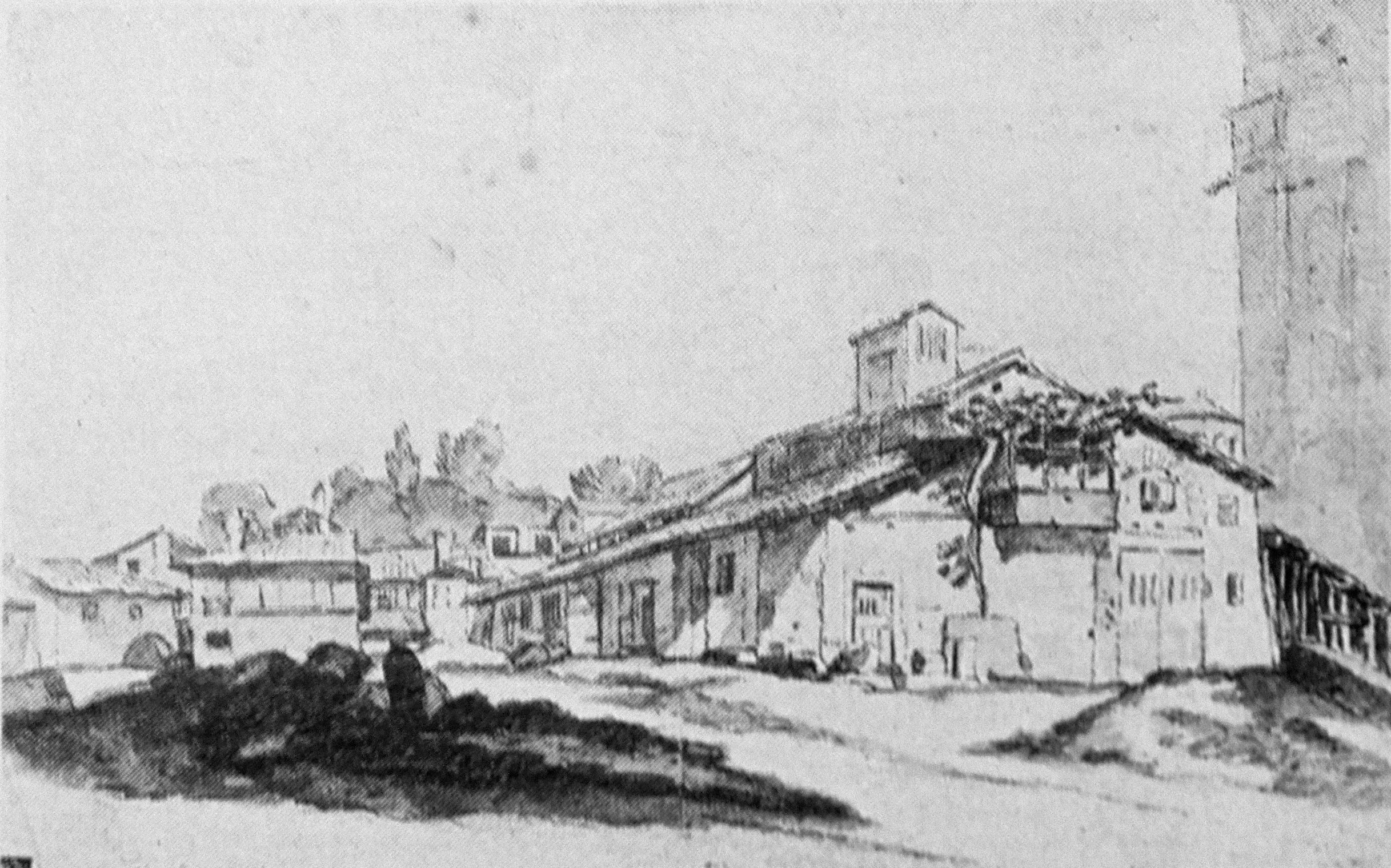 |
|
| 2. Nicolas Vleughels, A View of Bassano, 1707, black chalk and ink wash, 20 x 26.4 cm. Dijon, Musée des Beaux-Arts. | 3. Nicolas Vleughels, A View of Rome showing the Houses behind St. Peter’s, 1708, 18.8 x 29.3 cm. London, British Museum. |
Some of the basic aspects of Vleughels' first Italian are already known. From Dubois de Saint Gelais' statement, written offhandedly after the event, that stay was considerable, lasting twelve or thirteen years.6 Vleughels left for Italy in either late 1703 or early 1704.7 He definitely was in Rome by 1704, for in October of that year he served as a witness at the wedding of the sculptor Pierre Legros (1666-1719).8 Like Legros, Vleughels resided in the Farnese Palace, the home to the French Academy in Rome; he is documented as living there in 1705.9 While in Italy, Vleughels traveled about a fair amount—far more than Hercenberg recognized. The artist left for Venice on March 7, 1707, and had arrived there by the end of the month; he was still in Venice on August 19, 1707.10 He also traveled to Bassano that month, as is attested to by a drawing he made in that city on August 24th (fig. 2).11 He was back in Rome in May 1708, as is proven by a dated landscape drawing showing houses behind St. Peter’s (fig. 3).12
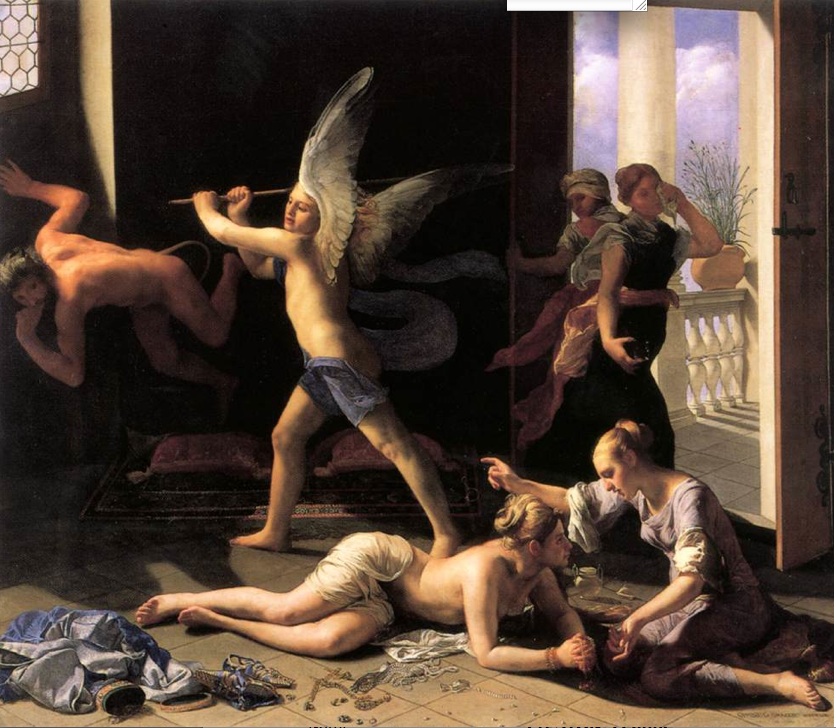 |
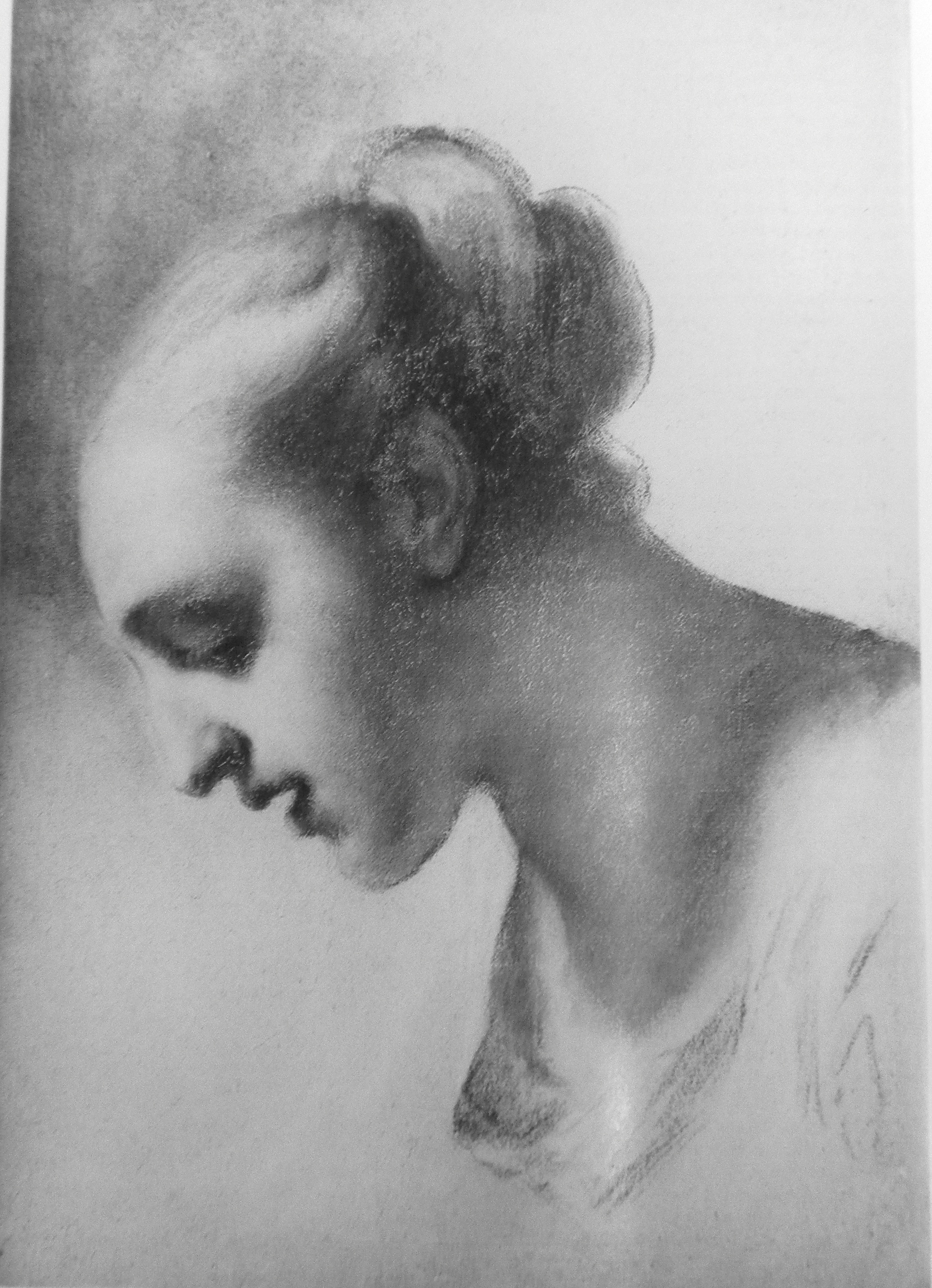 |
4. Guido Cagnacci, Martha with the Repentant Magdalen. Pasadena, California, Norton Simon Museum. |
5. Rosalba Carriera, Woman’s Head (after Guido Cagnacci), pastel, 46 x 33 cm. St. Petersburg, Hermitage, Department of Drawings. |
Other parts of his stay in Italy can be reconstructed, albeit only partially, thanks to Vleughels’ letters to Grassetti. The artist returned to Venice in late 1711 or early 1712, and he was evidently involved, even if only tangentially, in the sale of the duke of Mantua’s art collection. These paintings had gone onto the Venetian art market in 1711, two years after the duke’s death. Writing many years after the event, Vleughels mentions five paintings from the Mantuan collection that he had copied in Venice for de Prougen.13 Prougen, as we know from other sources, represented the interests of Bénédicte Henriette Philippe, Duchess of Hannover and Braunschweig-Lüneburg, in the settlement of the estate.14 One of the paintings copied by Vleughels, Guido Cagnacci’s Martha and the Repentant Magdalene (fig. 4), was sold almost immediately and transported to England. But before it left not only did Vleughels copy it but so did Rosalba Carriera (fig. 5).15 Another of the paintings that Vleughels copied, the Bernardo Strozzi Tribute Money (now in the Alte Pinakothek, Munich), left Venice after it was paid for in February 1712. This chronology establishes that Vleughels must have been in Venice in late 1711 or the first months of 1712. Significantly, in his November 16, 1712 letter to Rosalba Carriera, Vleughels acknowledged having met her mother and sister as well as the agent for the Mantuan paintings, all of which reaffirms his presence in Venice in 1711 or early 1712.16
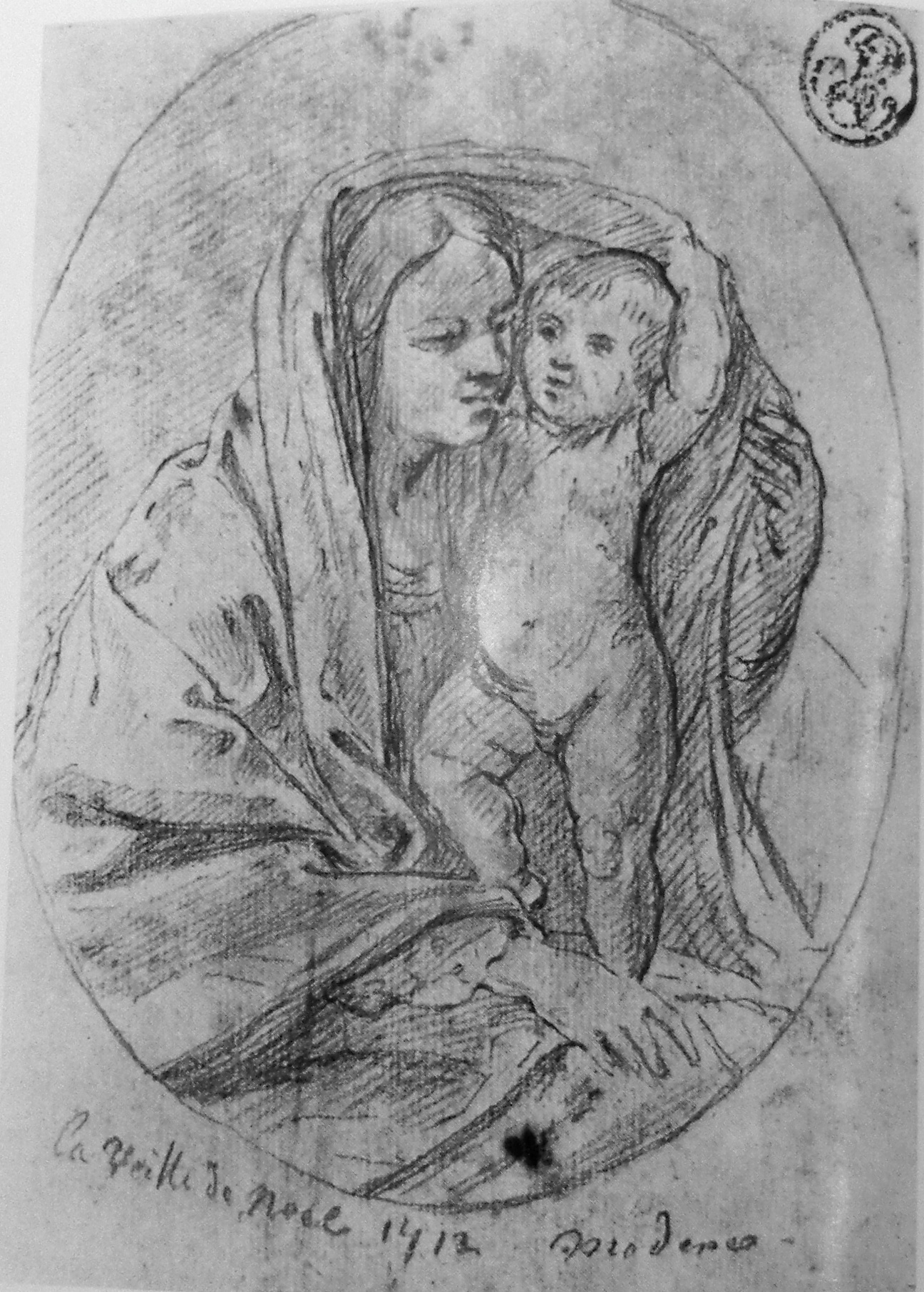 |
6. Nicolas Vleughels, Madonna and Child, 1712, black chalk, 16.4 x 12.1 cm. Paris, Musée du Louvre, Cabinet des dessins. |
For much of the time around 1712-13, Vleughels was in Modena. He was there in November 1712 when he sent Rosalba a letter and a painting of a Last Judgment.17 Also, he signed and dated three drawings in Modena, one in December 1712 (fig. 6), and two in January and November of 1713.18 These drawings have long been known but only now do we have some explanation of why he was in Modena for such an extended period: as his many letters to Grassetti suggest, he spent his time there in the company of his correspondent and good friend. Abate Grassetti was a great amateur of the arts and had entrée to the Este court and its fabled art collection.19 He was also in contact with some of the leading lights in Italian art, including the antiquarian scholar Lodovico Antonio Muratori (1672-1750) and Rosalba Carriera.20 Vleughels perhaps did not remain fixed in Modena and, instead, may have made side trips in the area. Nonetheless, his prolonged residence in Modena is noteworthy and his chronology is now more understandable.
Occasional allusions in Vleughels’ correspondence afford additional insight into his travels in Italy. For example, he mentions that he had been to Correggio and had visited the tomb of that town’s most famous artist.21 Vleughels seems to have traveled to Ferrara in December 1712.22 He went as well to Piacenza, where he saw Raphael's Sistine Madonna.23 In Bologna, he visited the collection of Bartolomeo Bonfiglioli.24 Also he traveled to Padua and drew landscapes of various sites there; none are known to have survived but some were later copied by Watteau.25 Exact dates cannot be assigned to most of these side trips but, nonetheless, they emphasize how mobile Vleughels was. Such excursions are exactly what one might expect of a young artist who, in the best academic tradition, was making a pilgrimage throughout Italy to learn from the Old Masters. His encounters with this older tradition and with contemporary Italian artists and connoisseurs was extremely meaningful—not only for his own development but for the course of French art in general.
Vleughels’ letters to Grassetti allow us to fix the date of his return to France with greater precision. Until now all we knew was that he had to have returned to Paris prior to his reception at the Académie Royale in July 1715. His correspondence in the Collegio di San Carlo establishes that he must have returned in early 1715--perhaps in March, but certainly by the first weeks of April. The earliest of his letters to Grassetti is dated "A Paris ce 16me avril 1715."26 Vleughels’ arrival had probably occurred some weeks still earlier, as he asks to be excused for his delay in writing, having been otherwise preoccupied since his return.27 As befits a first letter of return, it is only a general expression of thanks for all that Grassetti had done for him while in Italy. Moreover, it begins with Vleughels' apology for writing in French—an excuse that would not have been necessary after the first letter, since French was the only language in which Vleughels corresponded with Grassetti.
The issue of when Vleughels returned to Paris is complicated by the fact that Campori misread the date of one of Vleughels’ other letters from Paris as September 3, 1710, and he assigned as well a date of 1710 to an undated letter.28 These errors can be easily rectified. To begin with, the alleged "1710" of the first letter is patently a misreading of 1716. In addition, the letter refers to Pierre Legros' imminent return to Italy. Legros did not leave Rome until April 1715, underwent a gallstone operation in Paris, and returned to Italy after recuperating. A reading of September 1716 befits the circumstances described in the letter.29 The second, undated letter from Vleughels refers to Pierre Crozat's trip to Italy. That occurred in 1714-15 and therefore this second letter cannot have been written in 1710 but, rather, about five years later.
Beyond the issues of when and where Vleughels was while in Italy, there is the important issue of whom he knew there and how these people were associated with him and each other. Within Vleughels’ circle of acquaintances were some of the most important figures in early eighteenth-century art: the great connoisseur Pierre Crozat, the pastelist Rosalba Carriera, the sculptor Pierre Legros and, by no means least, Antoine Watteau.
 |
7. Jean François de Troy, Pierre Crozat (?). Whereabouts unknown. |
Vleughels’ correspondence with Grassetti offers some fascinating insights into his relation with Crozat (fig. 7). Hercenberg speculated that Vleughels might have known him when the maecenas went to Italy in 1714-15, arguing that Vleughels later did favors for Crozat in the 1720s. This hypothesis can now be confirmed. In Vleughels' undated letter from c. 1716, he informs Grassetti that he still sees Crozat in Paris, and he reminds the abate that Crozat had been in Modena in the past year.30 His brief form of allusion, without further explanation of who Crozat is, suggests that all three men already knew each other from Italy. This letter also documents how Vleughels had been acting on behalf of Crozat: it had been to aid his patron who was pursuing research on the life of Correggio, that Vleughels had gone to Correggio to copy the epitaph on the painter’s tomb.31
The correspondence in Modena does not explain how Vleughels and Crozat first met. While one cannot rule out the slim possibility that they knew each other in Paris in 1703, in all likelihood their introduction took place in Italy during Crozat's visit there. It might have been as a result of Crozat coming into general contact with the students associated with the French Academy in Rome. More specifically, it may have occurred through Vleughels’ contact with Pierre Legros, the sculptor who was renowned for his work in the Gesù and whom Crozat greatly esteemed.32 Legros and Vleughels had been close friends in Rome early on. Vleughels' room adjoined Legros' sculpture studio in the Palazzo Farnese,33 and, as was previously mentioned, Vleughels served as a witness at the sculptor's wedding in 1704. Legros might well have recommended Vleughels to Crozat, provided that Vleughels was there then.
An equally tantalizing possibility is that Crozat and Vleughels’ first contact occurred in Modena. Crozat entered Italy via Milan and might well have stopped in Modena en route to Rome. As we know from the already-cited reference in one of Vleughels' letters to Grassetti, Crozat visited Modena and met Grassetti. Once in Rome, Crozat measured the greatness of the Odescalchi collection against the yardstick of the d'Este collection, which suggests that he had already visited it.34 In other words, Crozat might have known Vleughels before he met Legros.
By a curious twist of fate, the history of the triad of Vleughels, Legros, and Crozat continued in Paris. Legros fell ill at the end of 1714, while Crozat was still in Rome; as has been mentioned on April 8, 1715, shortly after Vleughels and Crozat had returned to Paris, Legros set off for France to undergo a gallstone operation, taking his family with him.35 Crozat sheltered him in Paris. In addition to purchasing drawings and terracotta statuettes from Legros, Crozat commissioned him to execute stucco putti for his house on the rue Richelieu in Paris, as well as sculpture for the chapel in his country house at Montmorency. Crozat, as we know from a slightly later document, considered Legros to be "the best sculptor there is in Europe, and the most upright man and the most amiable there is."36 While with Crozat, Legros remained closely associated with Vleughels and even made a terracotta group of figures to provide inspiration for one of his friend's paintings.37
After his operation and recuperation, when Legros was ready to return to Italy, Vleughels may have had a hand in arranging the travel route. In one of his letters to Grassetti, Vleughels wrote that the sculptor was planning to stop in Modena and asked that Grassetti extend hospitality to his "good friend."38 Here is proof, if proof be needed, of how these interlocking rings of friendship were forged and how intimately interconnected these men were.39
Given Vleughels' and Watteau’s close relationships with Crozat, as well as Watteau’s and Vleughels’ close relationship with each other, one might have hoped to find references to Watteau in Vleughels’ correspondence with Grassetti. After all, both Watteau and Vleughels were in contact with Crozat and enjoyed a close artistic and social relationship in the years between 1715 and 1721. Vleughels was in contact with Crozat by 1715, and Crozat was well acquainted with Watteau before the end of 1716. By the end of 1717 (if not sooner) Watteau was living under Crozat’s roof.40 Thus Watteau and Vleughels were living in the same house. Moreover, they worked side-by-side, evidently enjoying a rich interchange. Working in tandem, the two artists copied the same drawings by Rubens and Van Dyck in their patron’s collection.41 As well, Watteau copied from Vleughels’ Italian sketchbooks and Vleughels copied some of Watteau’s inventions. By the end of 1718 both artists were living together in the home of Charles Lebrun’s nephew on the Fossez S. Victor. Yet none of this appears in Vleughels’ correspondence because there are no letters from 1717 and only one short note from October 1718. One can only presume that there were other letters to Grassetti in this period but they have not survived. And certainly Watteau would have figured in those letters. For example, when Vleughels wrote to Rosalba in September 1719, he reported that Watteau hoped one day to meet her and wanted to exchange works of art.42
One could well imagine that Vleughels’ missing correspondence with Grassetti touched on events that concerning Italian art and also included Watteau. Rosalba arrived in Paris in 1720 together with her brother-in-law Gian Antonio Pellegrini (1675-1741) and Anton Maria Zanetti (1679-1767), and also present in the French metropolis was the Venetian artist and painting dealer Francesco Pittoni (1645-1724). Crozat’s, Vleughels’, and Watteau’s names appear in Rosalba’s diary and letters, sometimes together, sometimes apart,43 and Watteau drew a portrait of Zanetti. If only we had Vleughels comments on these fascinating events.
Similarly, the absence of almost all Vleughels’ correspondence with Grassetti from 1717 to 1721 is frustrating because it leaves many key issues unresolved. It would be exciting to learn how Crozat, Vleughels, and Watteau first met each other. In the past, it was presumed that Watteau and Vleughels met through their mutual contacts in the Franco-Flemish community in Paris. Yet this is nothing more than a presumption, and we do not actually know if their acquaintanceship began before or after Vleughels’ trip to Italy. Vleughels and Crozat were evidently in contact by 1715, if not earlier. Likewise, it is increasingly clear that Watteau did not know Crozat until after the latter returned from Italy in 1715.44 Thus the conjunction of all three players probably did not occur until after Vleughels returned to Paris in the spring of 1715. Did Vleughels introduce Watteau to Crozat or, alternatively, did Crozat introduce Watteau to Vleughels? These tantalizing issues remain unresolved.
Ultimately, Vleughels’ extant letters, as fascinating as they are, afford only restricted glimpses into the lives of these artists and amateurs. Nonetheless, they establish just how closely intertwined such figures in the art world of 1700 were, and they also serve as a forceful reminder of how undocumented their lives still remain.
NOTES
1 I am once again indebted to my trusted colleague Eliot Rowlands for his many improvements to this manuscript, and to Cordelia Hattori for her generous help in regard to the portrait of Crozat. Above all, I am grateful to Seth Gopin for his encouragement and technical support, without which this website would not be possible.
2 Bernard Hercenberg, Nicolas Vleughels, Peintre et Directeur de l'Académie de France à Rome, 1668-1737 (Paris: 1975).
3 They were published by Giuseppe Campori, Lettere artistiche inedite (Modena: 1866) 152-79. Campori frequently corrected elisions and added punctuation, but otherwise was generally correct in his transcriptions. His errors in dating two of Vleughels’ letters are discussed below. I am grateful to Dottoressa Enrica Manenti, director of the Collegio San Carlo library, for her help in 1996 in locating these documents, which are now found in Busta E.V.6.
4 The importance of Campori's publication was noted by Philip Conisbee, Burlington Magazine 118 (December 1976), 871, in his review of Hercenberg's monograph. Conisbee’s observations had probably been stimulated by a reprint in 1976 of Campori’s book.
5 Although I am focusing here on the years between 1704 and 1721, Vleughels’ letters to Grassetti are also important for chronicling aspects of French art in the 1720s.
6 Louis François Dubois de Saint-Gelais, Histoire journalière de Paris, 1716-1717 (Paris: 1885), 58: "La même Académie reçut le dernier jour de l'année [1717] M. Vleughels...qui a été douze ou treize ans en Italie." Also see Pellegrino Antonio Orlandi, L'abecedario pittorico... (Bologna: 1719), 336: "dopo avere studiato sotto suo padre si è perfezionato in Italia, col soggiorno di dodici anni."
